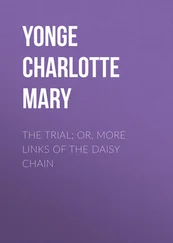The Church was not impressed. It took grave exception to the suggestion that its theology was a delusion founded on a mistake. And although it had its own impressive traditions of self-mortification – running from Origen, a founding father who had castrated himself for love of the Lord, through innumerable pillar-squatting and thorn-bush-dwelling hermits – it had by the twelfth century become extremely reconciled to earthly things. Church propagandists were soon recycling hoary myths of cannibalism, bestiality, and promiscuity that Roman authorities had once used against the early Christians, while Pope Lucius III ordered every bishop in 1184 to smoke out the heretics in his diocese by way of an annual dragnet. The unbelievers continued, however, inexorably to advance. By the end of the century, Catharism was running Catholicism a close second across much of northern Italy. In the Languedoc, a politically volatile region of southern France, there were large pockets where it was not so much a heresy as the orthodoxy.
The crisis came to a head with the advent of 37-year-old Lotario de Conti to the papacy in 1198. The youngish Lotario took the name of Innocent III and a contemporary fresco painting shows him to have a ruddy baby-face, but he was in fact about as ruthless and astute a politician as would ever occupy the Holy See. Soon after his accession, he wrote that the relationship between royal and papal authority resembled that of the sun and the moon – and the papacy did the radiating rather than the reflecting. He had his eyes on a prize: a world that owed its primary allegiance not to kings but to God, and more specifically, to His earthly representative. In pursuit of his vision, Innocent would blast seven kings and two emperors with excommunications and interdictions during his eighteen-year pontificate. But he was also honest enough to recognize that the Church was as much part of the problem as its solution. In a series of letters, he condemned his own bishops for whoring, hunting and gambling while heresy had spawned, slumbering like dogs too dumb to bark – and he now turned, at last, to the challenge that others had spent decades avoiding.
The first element of the counter-attack was put in place over the winter of 1205-6, when Innocent granted an audience to a charismatic Castilian in his mid-thirties called Domingo de Gúzman. The Spaniard, who dreamt as fervently as any heretic of pain and poverty, had already spent time preaching against the Cathars and he had come to Rome hoping for permission to convert infidels on the Mongol fringes of eastern Europe. Innocent saw in his gleaming eye an energy that was needed closer to home. The pontiff sent him straight back to the Languedoc. Domingo returned to find that monks from the wealthy Cistercian order still in slothful charge of the Church’s anti-heresy drive, but he was soon co-ordinating a mission that would transform Catholicism as much as it confronted its heretical opponents. Ostentatiously humble and tirelessly willing to debate any Cathar into the ground, he inspired an increasing number of acolytes – the Dominicans – who would become the spiritual shock troops of Catholic resurgence. The battle for hearts and minds had begun.
At the same time, back in the Eternal City, Innocent was busily exploring the possibilities of a more conventional conflict. Secret requests to King Philip Augustus of France to launch a crusade against the Cathars came to nothing however, the French monarch pleading a prior engagement to destroy King John of England, and Innocent hesitated to sponsor unilateral military action against a nominally Christian region. But Domingo’s disputations and Innocent’s hesitations then came to a sudden end.
On 13 January 1208, one of Innocent’s legates, awaiting a ferryboat on the banks of the Rhône, was murdered by a horse-borne killer. The rider, who ran a sword through his victim’s back, instantly galloped back into the anonymity from which he had swooped, but his bull’s-eye had consequences as momentous as those of any other homicide in history. A contemporary account describes the crisis council that Innocent now convened. Between the stone pillars of St Peter’s, surrounded by a circle of twelve cardinals, he called down a curse upon the assassin and snuffed out a candle, before demanding in the gloom what was to be done. One of his most trusted lieutenants, Arnold of Cîteaux, stood next to a pillar with head bent and then raised his eyes towards Innocent. ‘The time for talking is over,’ he replied. Innocent, his chin in one hand, nodded – and then declared, for the first time in Christian history, a crusade against an enemy within the Church itself.
Greedy barons, eager to participate in a papally sanctioned rampage through the wealthy Languedoc, contributed thousands of troops to the army that set off from Lyons in June 1209. The fighting would last two decades, but the force faced its first test just a month later, at the Cathar stronghold of Béziers. The city’s fate was emblematic of the mentality that had produced trial by ordeal, and constituted a suitably sanguine curtain-raiser to the four centuries of religious zealotry that were about to engulf Europe. While the soldiers prepared for a lengthy siege, setting up their catapults, tents, and latrines on the plains around the city, a group of kitchen boys mounted a quixotic assault on its walls. They somehow broke through. Within minutes, crusaders were pouring into the breach and Arnold of Cîteaux – told that it was impossible to distinguish Catholic from Cathar – was asked for his orders. ‘Slay them all,’ he reportedly murmured. ‘God will know His own.’
The news from Béziers overjoyed Innocent – who postulated that God had deliberately held back from destroying its residents with the breath of His nostrils in order that the crusaders could earn salvation by exterminating them personally – but no Catholic of his intelligence trusted in the sword alone. The Church needed a procedure that could detect the canker before it took hold, and that was a question of law rather than war. Innocent was never likely to think highly of trials that entitled his priests to extort several shillings for boiling a kettle, and having studied law at Bologna and theology at Paris, he would probably have been aware of Peter the Chanter’s theoretical critiques of trial by ordeal. But the most decisive argument was almost certainly a pragmatic one. A suspected heretic would escape punishment if acquitted. Innocent was too hard-nosed a pope to leave the future of his Church to the vagaries of divine intervention.
The papal interest in reform was already evident. Innocent had previously curtailed the use of compurgation in Church disciplinary cases, and in 1199, had approved a novel way of proceeding in criminal cases – per inquisitionem. The new technique entitled judges, in suitably clear cases, to launch inquiries of their own motion. That was, pointed out the pontiff, no more than God had done at Sodom and Gomorrah. The reform was a sign of things to come – and they came at the Fourth Lateran Council of November 1215.
The Council, which lasted three weeks, was an assembly of about four hundred bishops and over a thousand abbots, ambassadors, priors, and proxies from every country in the Catholic world. It was one of the grandest gatherings that Europe had ever seen, a fiesta of fireworks and parades so raucous that more than a few visiting pilgrims were trampled to death. But amidst all the excitement, Innocent remained firmly in control. Seventy reforms were presented to the delegates, for approval rather than debate, and they left few abuses unaddressed. As part of a crackdown on clerical misbehaviour, priests were forbidden from throwing dice, watching clowns, and wearing pointy-toed shoes. Princes were instructed to make Muslims and Jews wear unusual clothes, because too many Christians had been having sex with them and then claiming not to have noticed the difference. Every Catholic was required to make confession at least once a year, on pain of excommunication and burial in unhallowed ground. And tucked away in the package was Canon 18, which prohibited priests from blessing ordeals by water and fire. On 30 November, Innocent exposed a chunk of the True Cross for the delegates’ adoration and sent them home. It would take several years for the reforms to percolate through the continent, but the deed had been done. Since ordeals could not occur without priestly participation, European criminal justice had been transformed for ever.
Читать дальше
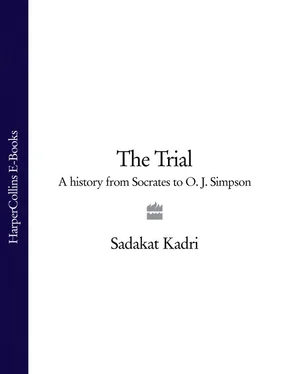
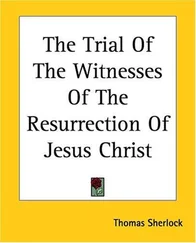
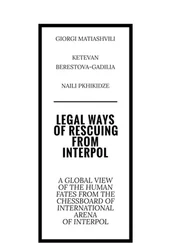
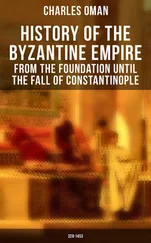
![Theresa Cheung - The Dream Dictionary from A to Z [Revised edition] - The Ultimate A–Z to Interpret the Secrets of Your Dreams](/books/692092/theresa-cheung-the-dream-dictionary-from-a-to-z-r-thumb.webp)





